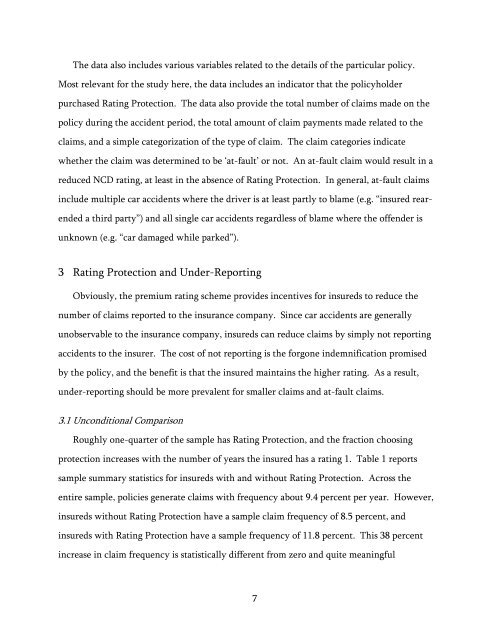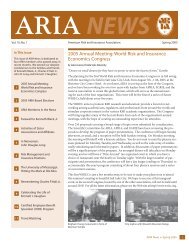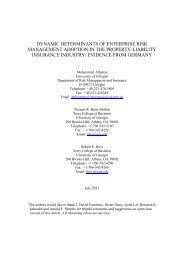EX-POST BEHAVIOR IN INSURANCE MARKETS* Greg Nini ...
EX-POST BEHAVIOR IN INSURANCE MARKETS* Greg Nini ...
EX-POST BEHAVIOR IN INSURANCE MARKETS* Greg Nini ...
Create successful ePaper yourself
Turn your PDF publications into a flip-book with our unique Google optimized e-Paper software.
The data also includes various variables related to the details of the particular policy.<br />
Most relevant for the study here, the data includes an indicator that the policyholder<br />
purchased Rating Protection. The data also provide the total number of claims made on the<br />
policy during the accident period, the total amount of claim payments made related to the<br />
claims, and a simple categorization of the type of claim. The claim categories indicate<br />
whether the claim was determined to be ‘at-fault’ or not. An at-fault claim would result in a<br />
reduced NCD rating, at least in the absence of Rating Protection. In general, at-fault claims<br />
include multiple car accidents where the driver is at least partly to blame (e.g. “insured rear-<br />
ended a third party”) and all single car accidents regardless of blame where the offender is<br />
unknown (e.g. “car damaged while parked”).<br />
3 Rating Protection and Under-Reporting<br />
Obviously, the premium rating scheme provides incentives for insureds to reduce the<br />
number of claims reported to the insurance company. Since car accidents are generally<br />
unobservable to the insurance company, insureds can reduce claims by simply not reporting<br />
accidents to the insurer. The cost of not reporting is the forgone indemnification promised<br />
by the policy, and the benefit is that the insured maintains the higher rating. As a result,<br />
under-reporting should be more prevalent for smaller claims and at-fault claims.<br />
3.1 Unconditional Comparison<br />
Roughly one-quarter of the sample has Rating Protection, and the fraction choosing<br />
protection increases with the number of years the insured has a rating 1. Table 1 reports<br />
sample summary statistics for insureds with and without Rating Protection. Across the<br />
entire sample, policies generate claims with frequency about 9.4 percent per year. However,<br />
insureds without Rating Protection have a sample claim frequency of 8.5 percent, and<br />
insureds with Rating Protection have a sample frequency of 11.8 percent. This 38 percent<br />
increase in claim frequency is statistically different from zero and quite meaningful<br />
7






